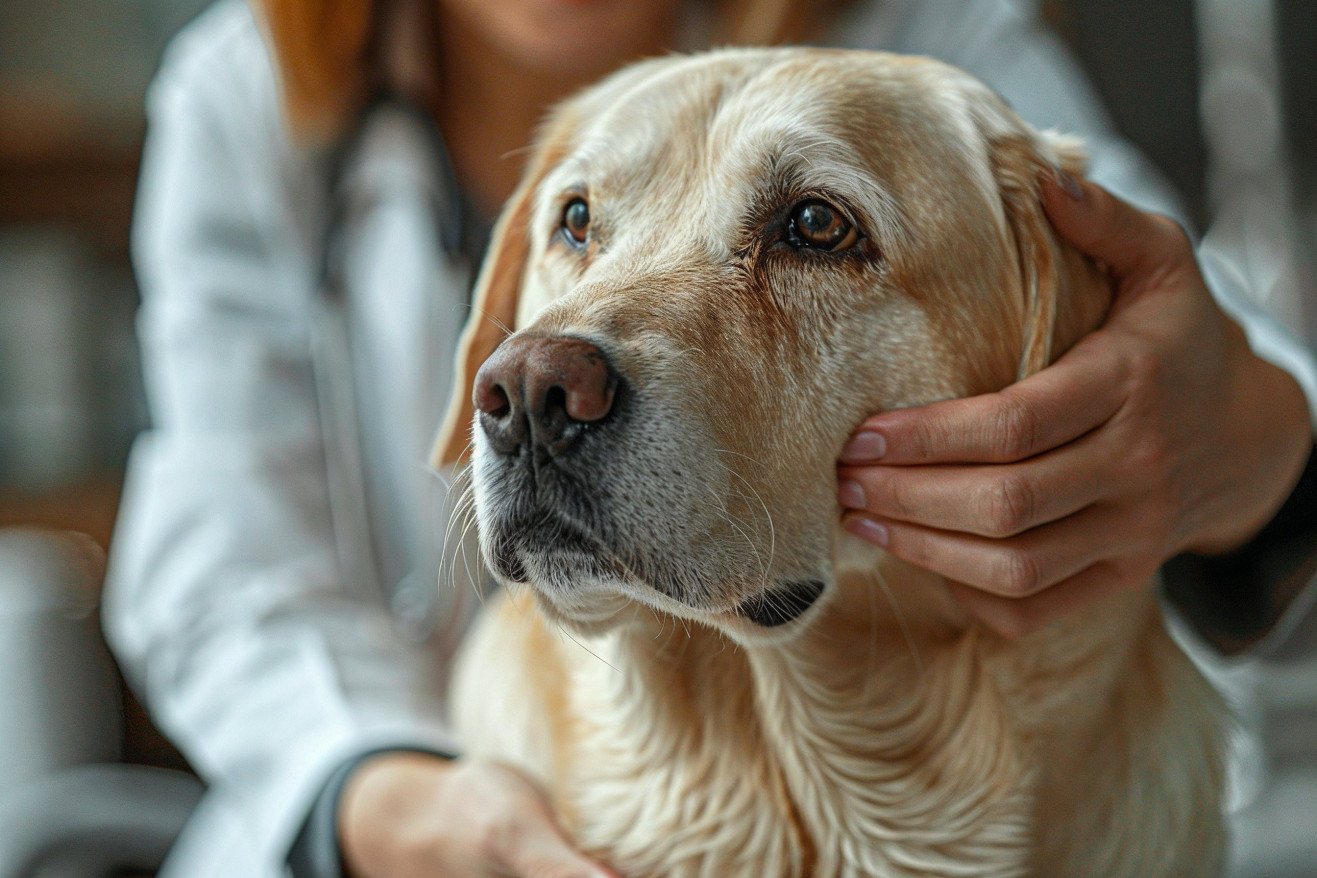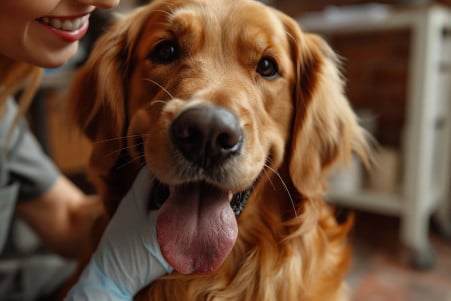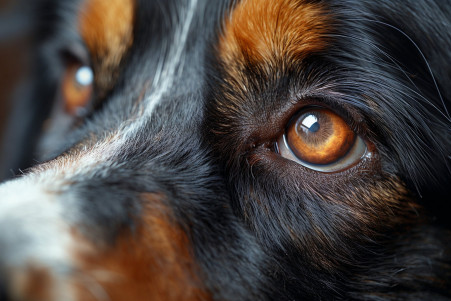Where Are a Dog's Lymph Nodes Located? A Detailed Overview
4 June 2024 • Updated 3 June 2024

If you've found some lumps and bumps on your dog, there's a good chance that you are feeling their lymph nodes. Lymph nodes are an important part of a dog's immune system, and they can be found all over the body, including the neck, shoulder regions, armpits, groin, and popliteal areas. Since swollen lymph nodes can be a sign of an infection or other health issue, it's important to have your vet check out any lumps that you find.
To help you figure out what might be going on with your dog, we've looked to veterinary medicine to explain the role and locations of lymph nodes in dogs. This scientific overview will help you determine when swollen lymph nodes are a sign of a minor, temporary problem and when they are a sign of a more serious issue that needs medical attention. By the end, you'll know what to look for and when to take your dog to the vet.
Where are a dog's lymph nodes located?
Where to Find and How to Check Dog Lymph Nodes
Checking your dog's lymph nodes regularly is an important part of ensuring your dog's overall wellness. The major peripheral lymph nodes that can be felt are located in the lower jaw/neck area, in front of the shoulders, in the armpits, the groin, and behind the knees, according to The National Canine Cancer Foundation.
To check these areas, gently run your hands over the skin, using light pressure. As Dr. Buzby's ToeGrips explains, healthy lymph nodes should feel small and movable, like peas or grapes depending on your dog's size. The submandibular (under jaw) and popliteal (behind knee) nodes are often the easiest to detect.
Be sure to use a light touch when palpating, as pressing too hard can cause pain or damage to swollen nodes. When you're checking, look and feel for any firm, fixed swellings that are larger than normal. According to Whole Dog Journal, swollen lymph nodes can be a sign of infection, parasites, or even cancer, so it's important to monitor them for changes.
Make sure you know what your dog's lymph nodes feel like when they're healthy so you can easily tell if there are any changes. Check them once a month and make a note of any swelling, along with any other symptoms, to bring to your vet's attention. Regularly checking your dog's lymph nodes will help you catch any potential health problems early.
Causes and Consequences of Swollen Lymph Nodes
There are many reasons why a dog may have swollen lymph nodes, including infections, allergies, autoimmune diseases, and even cancer. According to Fetchpet, swollen lymph nodes are usually larger and harder than normal, and can be caused by bacterial, viral, fungal or parasitic infections, as well as inflammation or cancer in the body.
Certain dog breeds, such as golden retrievers, boxers, and bulldogs, seem to have a higher genetic risk of developing lymphoma, a cancer that often affects the lymph nodes, according to The Spruce Pets. However, regardless of a dog's breed, any time there is swelling in the lymph nodes that doesn't go away or is particularly pronounced, it should be checked out by a vet.
As noted by Vetster, the diagnostic process for swollen lymph nodes often includes a physical examination, blood tests, and potentially a fine needle aspiration or lymph node biopsy. Although swollen lymph nodes don't always mean that there is a serious issue at play, they should not be overlooked as they may need medical attention to be properly diagnosed and treated.
How to Treat Swollen Lymph Nodes
The way that swollen lymph nodes are treated in dogs will depend on the cause of the issue. For example, if the swelling is due to an infection, the vet may prescribe antibiotics or anti-inflammatory medications to help reduce the swelling and combat the infection. If the swelling is due to allergies, the vet may suggest a combination of treatment options, including identifying and avoiding allergens, medications, topical treatments, special diets, and environmental management.
If the swollen lymph nodes are caused by a disease like lymphoma, which is a common cancer that affects the lymph nodes, the treatment will be more aggressive. For example, as explained by BeChewy, the treatment plan may include chemotherapy or radiation therapy. In some cases, the swollen lymph nodes may even need to be drained or removed through surgery.
No matter what the cause of the swollen lymph nodes is, it's important for dog owners to keep a close eye on their pets throughout the treatment and recovery process. ElleVet Sciences explains that supportive care, including rest, a healthy diet, and proper hydration, can help the dog's body heal. In addition, it's important for dog owners to stay in touch with their vet and let them know if they notice any new symptoms or have any concerns so that they can ensure the best possible outcome.
When to Take Your Dog to the Vet for Swollen Lymph Nodes
If you notice that your dog's lymph nodes are swollen for an extended period of time or if the swelling is particularly pronounced, it's important to take your dog to the vet. This is because, as VCA Animal Hospitals points out, lymph node enlargement is often the first sign of lymphoma, which is one of the most common cancers in dogs. Early detection of lymphoma and other serious conditions is important because it can lead to better treatment outcomes.
That said, not all cases of swollen lymph nodes are cause for alarm. For example, The Spruce Pets notes that lymph nodes can swell in response to minor infections or allergies. The important thing is to be able to tell the difference between normal swelling that will go away on its own and swelling that is a sign of a more serious issue that requires medical attention.
Your vet can help you establish a baseline for what your dog's lymph nodes should feel like during regular check-ups. Whole Dog Journal suggests checking your dog's lymph nodes once a month and letting your vet know if you notice any changes that don't go away. The sooner you let your vet know about swollen lymph nodes, the sooner they can help you figure out what's causing the swelling and address the issue, whether it's something minor or something as serious as lymphoma.
It's important to be open with your vet about any lumps or bumps you notice on your dog. This will help you stay on top of any potential health issues and ensure that they're addressed in a timely manner. With regular vet visits and good communication, you can help make sure that your dog's lymph nodes stay healthy.
Preventative Measures and Lymph Node Health
Dogs need regular preventative care, including vaccinations and parasite prevention, to help lower the risk of infections and diseases that can lead to lymph node swelling, according to ElleVet Sciences. A healthy immune system and healthy lymph nodes can also be supported by a healthy diet, exercise, and stress management.
Regular wellness visits and exams with a vet are also important for keeping an eye on lymph nodes and any changes that may occur over time, according to Today's Veterinary Practice. In between visits, dog owners can check their dog’s lymph nodes once a month, feeling for any changes in size, texture, or appearance.
It’s also important to make sure that any concerns about lymph nodes are brought to the attention of a vet right away, as Sonography and sonoelastography in the detection of malignancy in superficial lymph nodes of dogs notes that catching abnormalities early can lead to much better treatment results. By being proactive about monitoring and preventative care, dog owners can help ensure their pets’ overall health and well-being.
Conclusion: How to Keep Your Dog's Lymph Nodes Healthy
Lymph nodes are located in specific areas of the body that are part of the lymphatic system, which is a critical part of a dog's immune system. Lymph nodes contain a large number of lymphocytes, which are white blood cells that process antigens and create antibodies to help the body fight off infections. The most common locations for peripheral lymph nodes in dogs are the cervical nodes (located under the jaw), the pre-scapular nodes (located between the shoulder and neck), the axillary nodes (located under the front legs), the inguinal nodes (located in the groin), and the popliteal nodes (located behind the knee).
Healthy lymph nodes are small, soft, and painless. If a lymph node feels hard, warm, or painful, it could be a sign of an issue in the area of the body it serves. As Safarivet explains, lymph nodes are like "police headquarters," where they gather antigens from macrophages and create antibodies to help the body fight off infections.
While there are more than 100 lymph nodes in a dog's body, only a few can be felt by pet owners and veterinarians, according to ImpriMed. However, these lymph nodes are critical to a dog's health and well-being, as they help remove waste, kill bacteria, and protect the body.
By keeping your dog's immune system healthy with regular care and monitoring, you can help keep your dog's lymph nodes—and your dog—healthy.


